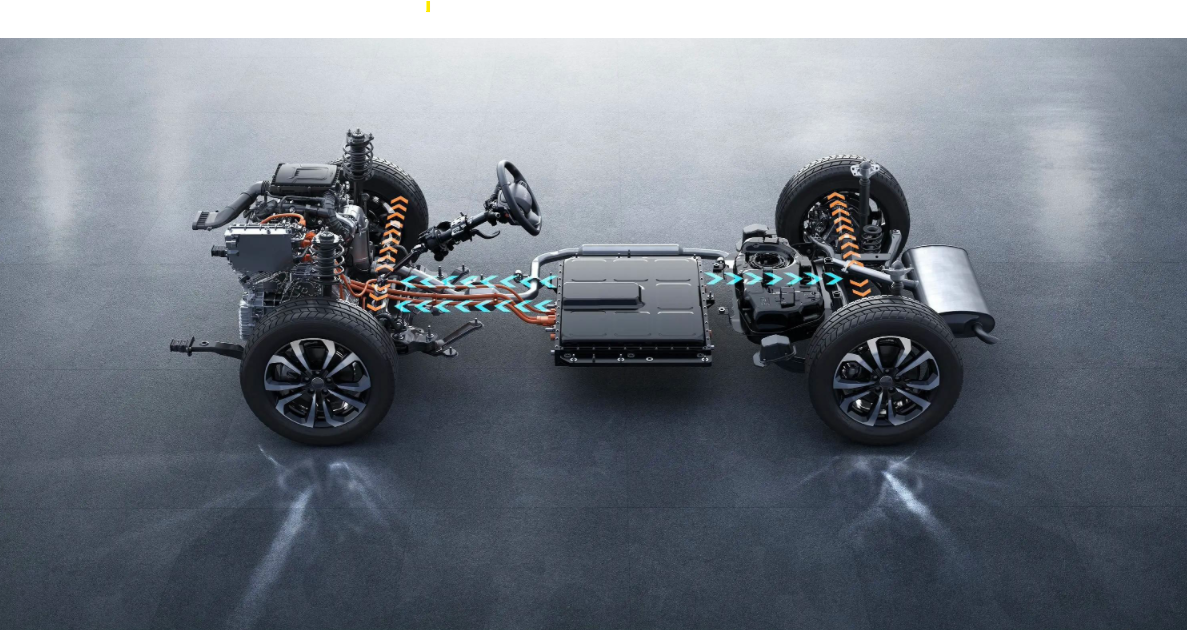On August 19th, GAC Group released its "ADiMOTION" range-extending technology, first equipped on the Hyper HL Extended-Range Edition, achieving a CLTC pure electric range of 350 km and a maximum combined range of 1,369 km.
On August 7th, SAIC-GM's Buick brand introduced the "True Dragon" range-extending system, debuting on the upcoming Zhijie L7, with a CLTC pure electric range of 302 km and a combined range exceeding 1,400 km.
Earlier on August 1st, IM Motors launched SAIC’s in-house developed "Star" Super Range Extender, marking its entry into the extended-range market. This technology debuted on the new-gen IM LS6, boasting a CLTC pure electric range over 450 km and a combined range surpassing 1,500 km.
In June, GAC Toyota announced plans to release extended-range versions of the Highlander and Sienna. XPeng also revealed it will launch its first extended-range model, the X9, this year. Additionally, reports suggest Xiaomi’s next EV will adopt extended-range technology.
Whether it's joint venture brands or domestic ones, more and more automakers are beginning to lay out or increase their investment in range-extending technology. With the further increase in the number of players, the range-extending field has become even more crowded, and the competition has also intensified.
Why is range-extending technology gaining popularity in the new energy vehicle sector? From the perspective of users, range-extending vehicles that can run on both electricity and fuel eliminate the anxiety over range and charging. Currently, some consumers still have concerns about the range and charging of pure electric vehicles. Range-extending vehicles, however, can be driven by electricity and generate power from fuel when the battery is low, significantly reducing range anxiety. They offer the pure electric driving experience while avoiding the charging limitations of pure electric vehicles. Compared with pure electric vehicles, range-extending vehicles do not rely on a dense charging network and are suitable for both urban commuting and long-distance travel, especially for users with limited charging conditions.
From the perspective of enterprises, the technical threshold for range extender technology is relatively low, and the research and development cycle is short. Compared with the brand-new development of pure electric platforms, range extender technology can be optimized based on the existing fuel vehicle architecture, reducing research and development costs.
Meanwhile, the range-extending system structure is simpler than that of plug-in hybrids, without the need for complex transmission matching, and is easier to achieve large-scale production.
From a market perspective, brands like Li Auto and AITO have demonstrated that extended-range vehicles enjoy high acceptance in the high-end market, with consumers willing to pay a premium for the "pure electric experience without range anxiety." Data from the Passenger Car Market Information Joint Branch of the China Automobile Dealers Association shows that from 2021 to 2024, sales of extended-range models grew by 218%, 130%, 154%, and 70.9% respectively, far outpacing the growth rates of pure electric vehicles and fuel vehicles during the same period.
Of course, extended-range technology is not without its drawbacks. For instance, although extended-range vehicles offer smoothness close to that of pure electric vehicles, they have pain points such as high fuel consumption, insufficient power, and obvious noise and vibration when the battery is low. To address these issues, the new generation of extended-range vehicles all adopt larger batteries to reduce the frequency of engine intervention; optimize the efficiency of the range extender to lower fuel consumption when the battery is low; and refine the oil-electric switching strategy to enhance quietness.
Although "large battery + small fuel tank" has become the mainstream of the new generation of range-extending technology, industry insiders point out that the battery of range-extending vehicles is not necessarily the larger the better. A larger battery is a double-edged sword. While it provides better range, it also means higher costs, higher prices, and a heavier vehicle body, which will affect handling.
Whether the improvement of range-extending technology is as excellent as car manufacturers claim remains to be seen.
However, it can be predicted that in the field of new energy vehicles, technologies such as range extension, pure electric, and plug-in hybrid will coexist for a long time. The range extension technology is not perfect, but in the current stage where the charging infrastructure and battery technology are not yet fully mature, it offers a solution that balances range, cost, and driving experience. In the future, as ultra-fast charging becomes widespread and solid-state batteries are mass-produced, pure electric vehicles may gradually replace range-extended vehicles, but in the short term, range extension will still be an important transitional option.
Declaration: This article comes from Economic Information Daily.If copyright issues are involved, please contact us to delete.
